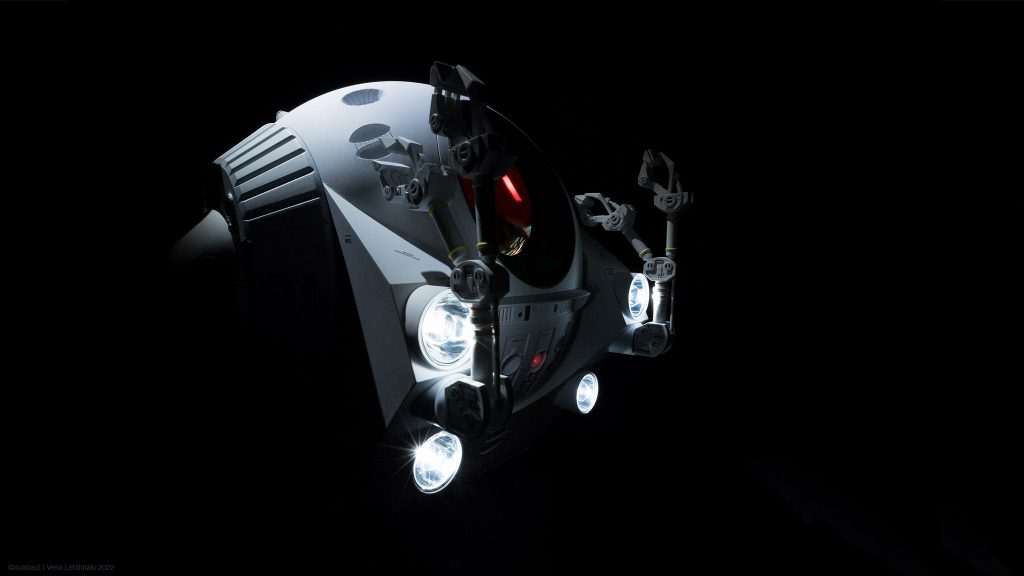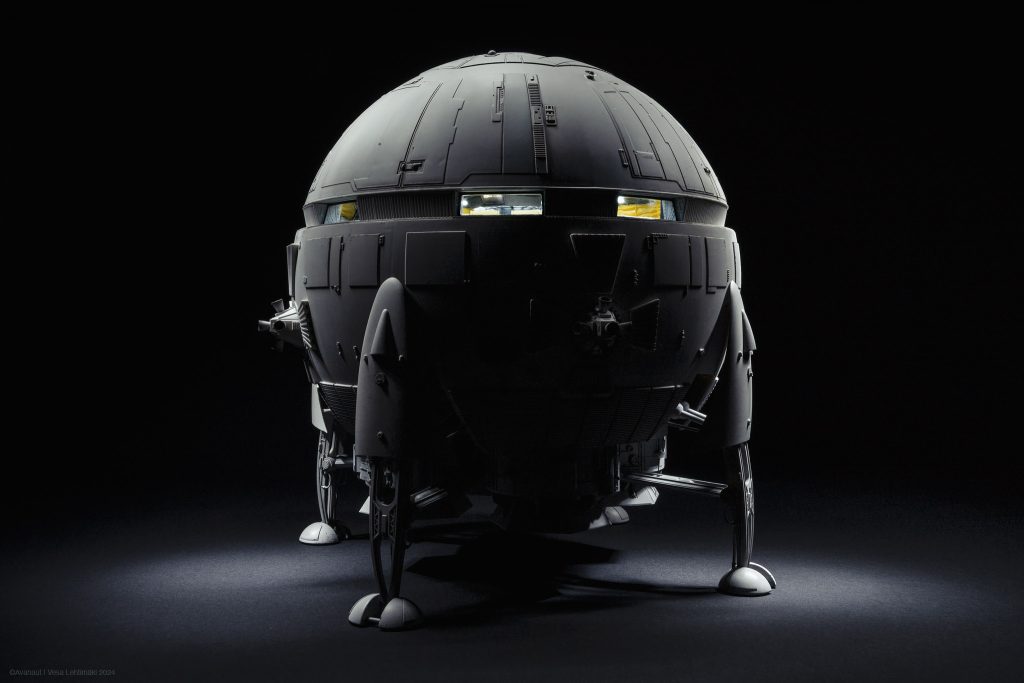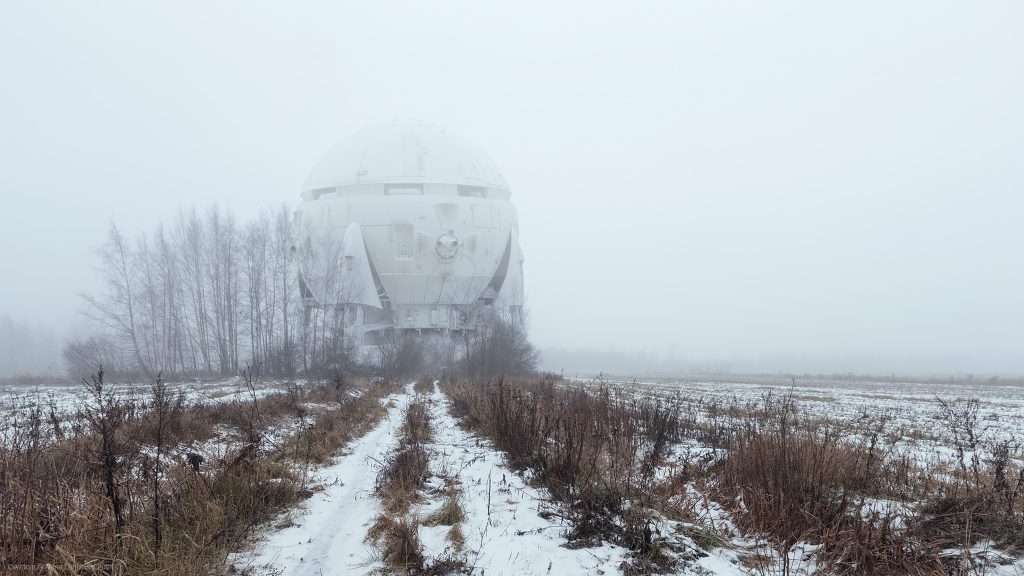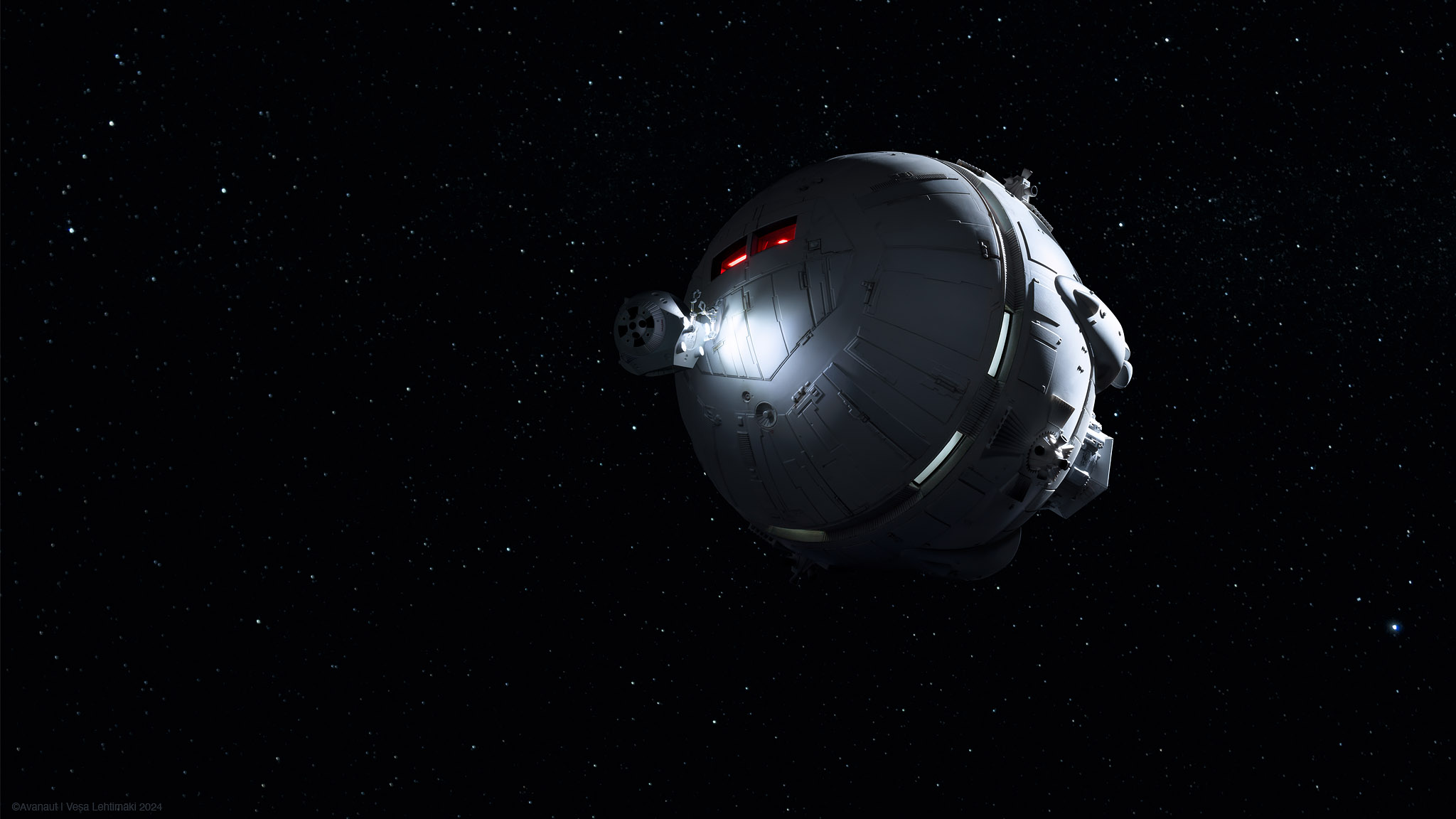Stanley Kubrick’s 2OO1: A Space Odyssey was the first DVD I ever bought. It was also the first Bluray and 4K UHD disc I ever bought. That should say something, I love that film.
There were not too many scale models from the film available until very recently. There was the small 1:144 scale Aurora Orion III Shuttle kit, first released in 1969, later reboxed and re-released by Airfix. The 1:55 scale Aurora Moonbus kit was also released in 1969 with subsequent re-releases. There were some small garage kit runs much later, most notably the 1:32 scale resin EVA pod kit and the elusive big 1:48 scale Atomic City Orion III resin kit. I tried to obtain the big Orion for quite some time but it was like trying to find a living Dodo bird.
A few years ago kit manufacturer Moebius took on producing some 2OO1 kits in relatively big scales. They have several different kits now out. I first bought and built their big 1:8 scale EVA pod. It’s very pretty but has some issues. The detail is soft here and there and it is a bit awkward to build with the appropriate lights, it wasn’t designed for that. It is doable though and I like the big size, it’s great for photography.


Then I got the 1:48 scale Aries 1B. It’s practically the same size as the EVA pod, they make a nice pair. Like the EVA pod I preordered the Aries the day it first became available. There are lots of aftermarket upgrade parts available for these kits: photoetch and resin parts, 3D-prints, decals and masks. I've not used all there is but there are some upgrades here and there.
Now, Aries 1B, the actual filming model, has an amazing history. As we know, the original models were supposedly all destroyed after the filming wrapped. Some say it was because Stanley Kubrick wanted to prevent them from showing up in other movies later thinking it would diminish the uniqueness of 2OO1. Some say it was simply because there was no budget for storage. Apparently it is a very complicated story with museum plans gone awry. Whatever the reason was, for decades they were thought lost forever. And some really were destroyed, like the big Space Station V. But then, in 2015, out of the blue, the original screen used Aries model turned up and in relatively good condition too. It was restored, auctioned for $344,444, and is now in The Academy of Motion Pictures Arts and Sciences museum in Los Angeles.
The Moebius Aries 1B kit is like the EVA pod kit, big, soft on details and not super well designed thinking about the building experience. The big question for me was whether to light the floor of the passenger cabin like the full size studio set piece. The kit clearly wasn’t meant for this, there is thick plastic and seams in unfortunate places. Furthermore the floor can’t really be seen once the model is finished, just glimpses from a very limited angle are visible.

What’s the point spending almost a week lighting the floor knowing it won’t be visible once the model is finished? It was a lot of work after all. Knowing it is there is one thing of course, there is satisfaction in that. One could also argue the light from the floor has an effect on the ambient light in the cabin even if the source itself is obscured. It makes the ambience seen thru the tiny windows look right. There are 25 individual leds providing the light in the cabin plus half a dozen red leds for the cockpit, you’ll never know there is that many of them just by looking at the model. Maybe this was a little bit of an overkill but it’s also about peace of mind.
These little things I can have control over when building, lighting and some custom details. It’s the painting and weathering what I fear the most. So many unknowns in the cocktail of pigments and layers. It is always intimidating, sometimes also horrifying.
The original Aries 1B has a very straightforward paint scheme. Basically you could say it’s off-white with some panels ever so slightly grey and everything weathered with what looks like black soot from the manoeuvering thrusters. I decided to paint mine like that to keep it real. But, alas, it didn’t look good, not with my skills. It was too simple and to be honest this off-white colour is not really my favourite. I gave up on the attempts to make the model look like the original. It is often harder than it looks anyway. I decided to take the weathering to a different direction. Unfortunately the decision came a little too late to do a layered paintjob the way I like. I wouldn’t know how to do it on top of that white.
In order to not ruin the paintjob altogether I added some chipping and small details here and there, mostly random waterslide decals from the archives. The decals are small enough to not really make anything of them but they add a little bit of nondescript detail nevertheless methinks. Then just some subtle wear and tear. Not sure if this was the right call but the white just felt kinda wrong – even if it was kinda right.


I had some photographs in mind when I was building the model. The header photograph on this post is the first. I wanted to play with interaction of the two 2OO1 models I have. Surely, if the Aries needed attention somewhere between the Earth orbit and the Moon, the EVA pod was the right tool for that. Who said the EVA was a Discovery exclusive? I never heard anything of the sort. Yup, nothing about that.

The wintery field photograph is an edit to this blogpost a week after I first published it. The new photograph needed to be here. It is the final step of the process from first photographing the landscape image in December 2021, building the model in stages in 2023-2024 and merging the two. The original photograph was always meant for this, for the Aries 1B in particular. The news of an Aries model to be released turned up just a couple of weeks before I took it.

